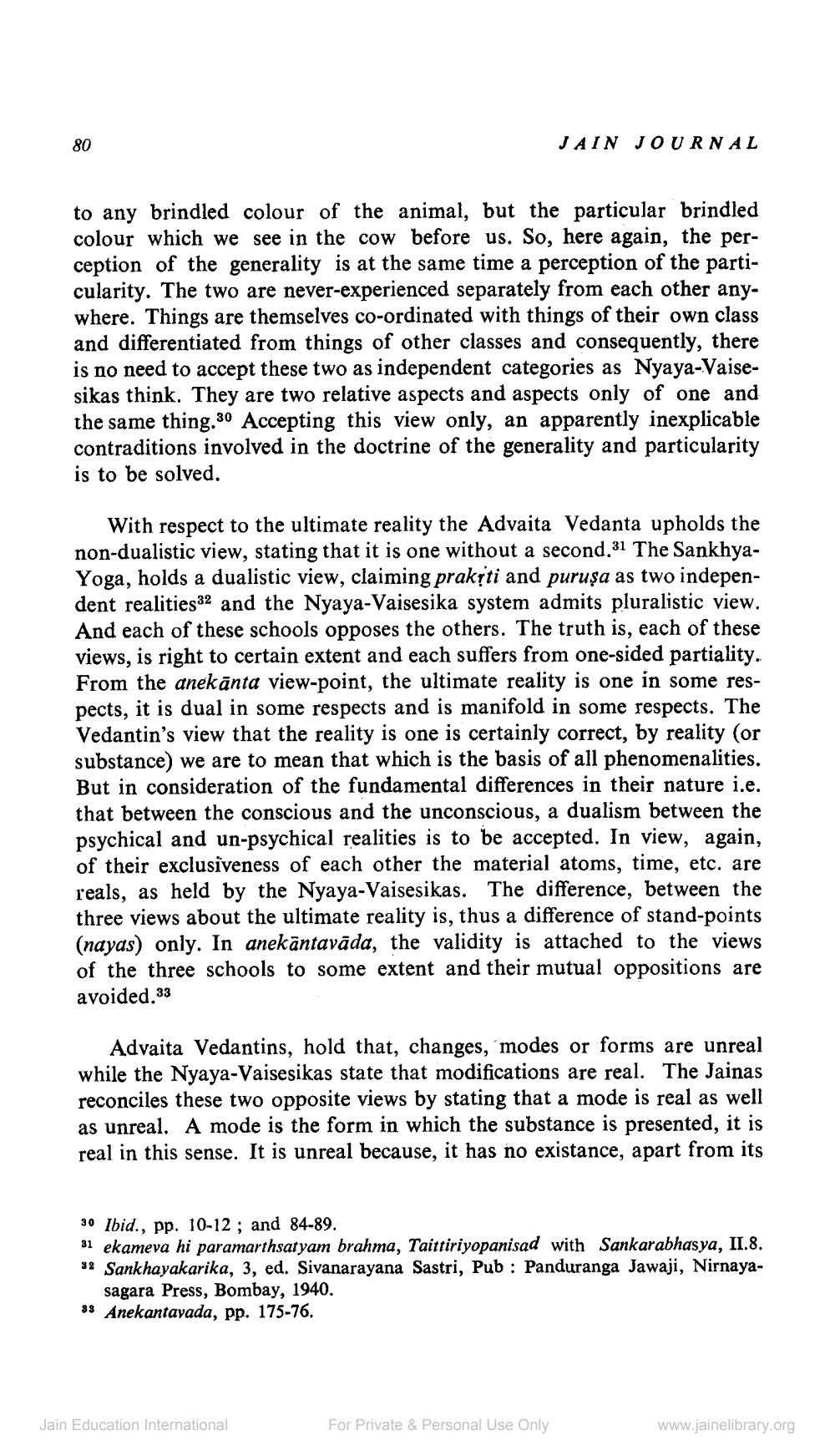________________
80
to any brindled colour of the animal, but the particular brindled colour which we see in the cow before us. So, here again, the perception of the generality is at the same time a perception of the particularity. The two are never-experienced separately from each other anywhere. Things are themselves co-ordinated with things of their own class and differentiated from things of other classes and consequently, there is no need to accept these two as independent categories as Nyaya-Vaisesikas think. They are two relative aspects and aspects only of one and the same thing.30 Accepting this view only, an apparently inexplicable contraditions involved in the doctrine of the generality and particularity is to be solved.
JAIN JOURNAL
With respect to the ultimate reality the Advaita Vedanta upholds the non-dualistic view, stating that it is one without a second.31 The SankhyaYoga, holds a dualistic view, claiming prakṛti and puruşa as two independent realities 32 and the Nyaya-Vaisesika system admits pluralistic view. And each of these schools opposes the others. The truth is, each of these views, is right to certain extent and each suffers from one-sided partiality. From the anekānta view-point, the ultimate reality is one in some respects, it is dual in some respects and is manifold in some respects. The Vedantin's view that the reality is one is certainly correct, by reality (or substance) we are to mean that which is the basis of all phenomenalities. But in consideration of the fundamental differences in their nature i.e. that between the conscious and the unconscious, a dualism between the psychical and un-psychical realities is to be accepted. In view, again, of their exclusiveness of each other the material atoms, time, etc. are reals, as held by the Nyaya-Vaisesikas. The difference, between the three views about the ultimate reality is, thus a difference of stand-points (nayas) only. In anekantavāda, the validity is attached to the views of the three schools to some extent and their mutual oppositions are avoided.33
Advaita Vedantins, hold that, changes, modes or forms are unreal while the Nyaya-Vaisesikas state that modifications are real. The Jainas reconciles these two opposite views by stating that a mode is real as well as unreal. A mode is the form in which the substance is presented, it is real in this sense. It is unreal because, it has no existance, apart from its
30 Ibid., pp. 10-12; and 84-89.
31 ekameva hi paramarthsatyam brahma, Taittiriyopanisad with Sankarabhasya, II.8. $2 Sankhayakarika, 3, ed. Sivanarayana Sastri, Pub: Panduranga Jawaji, Nirnaya
sagara Press, Bombay, 1940.
33 Anekantavada, pp. 175-76.
Jain Education International
For Private & Personal Use Only
www.jainelibrary.org




